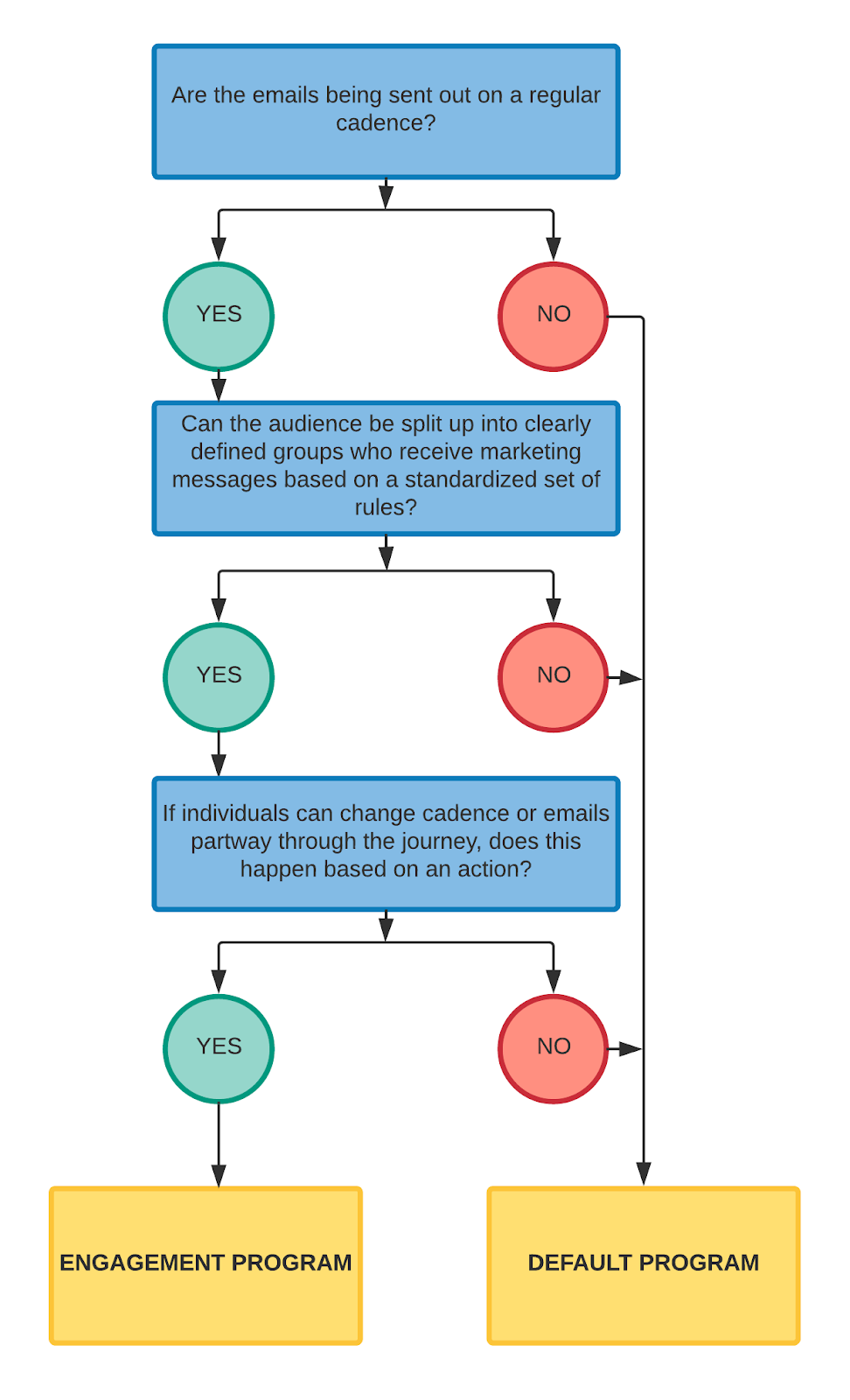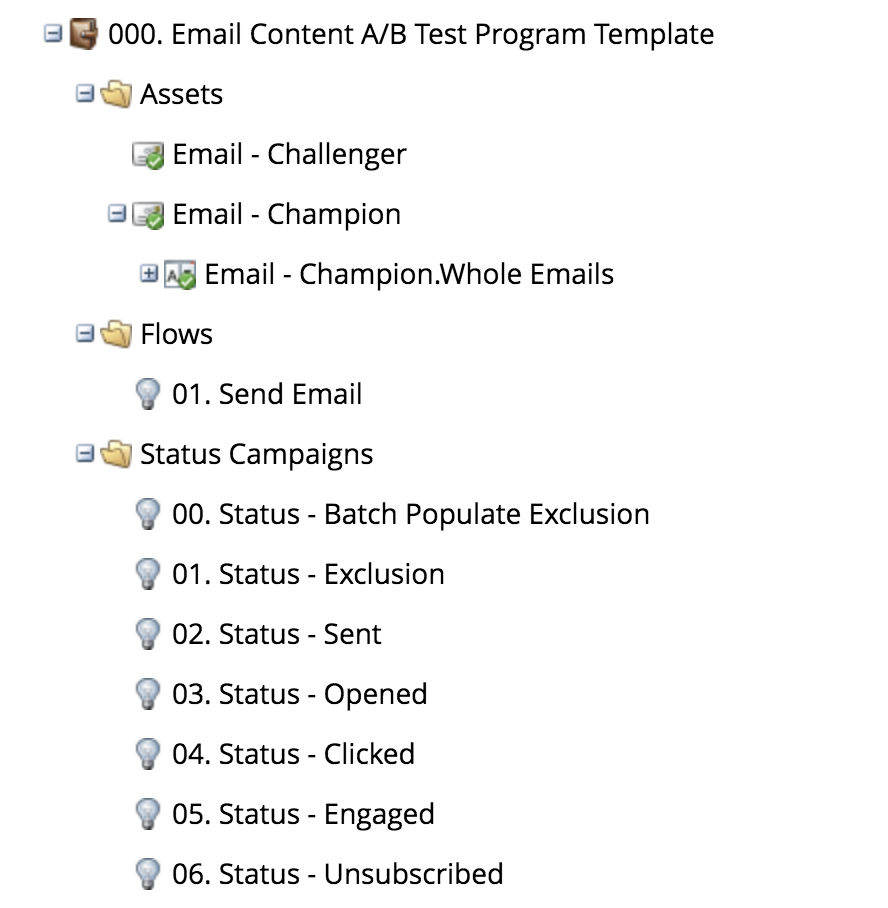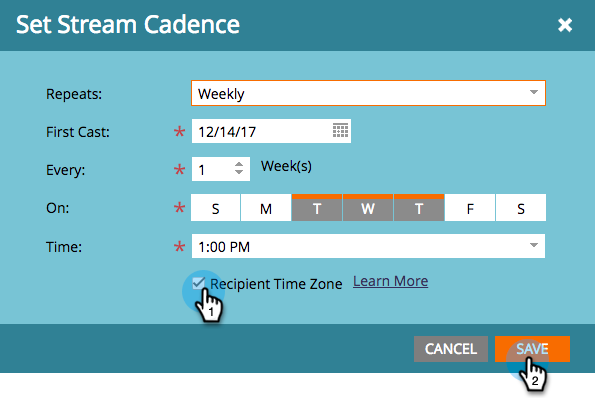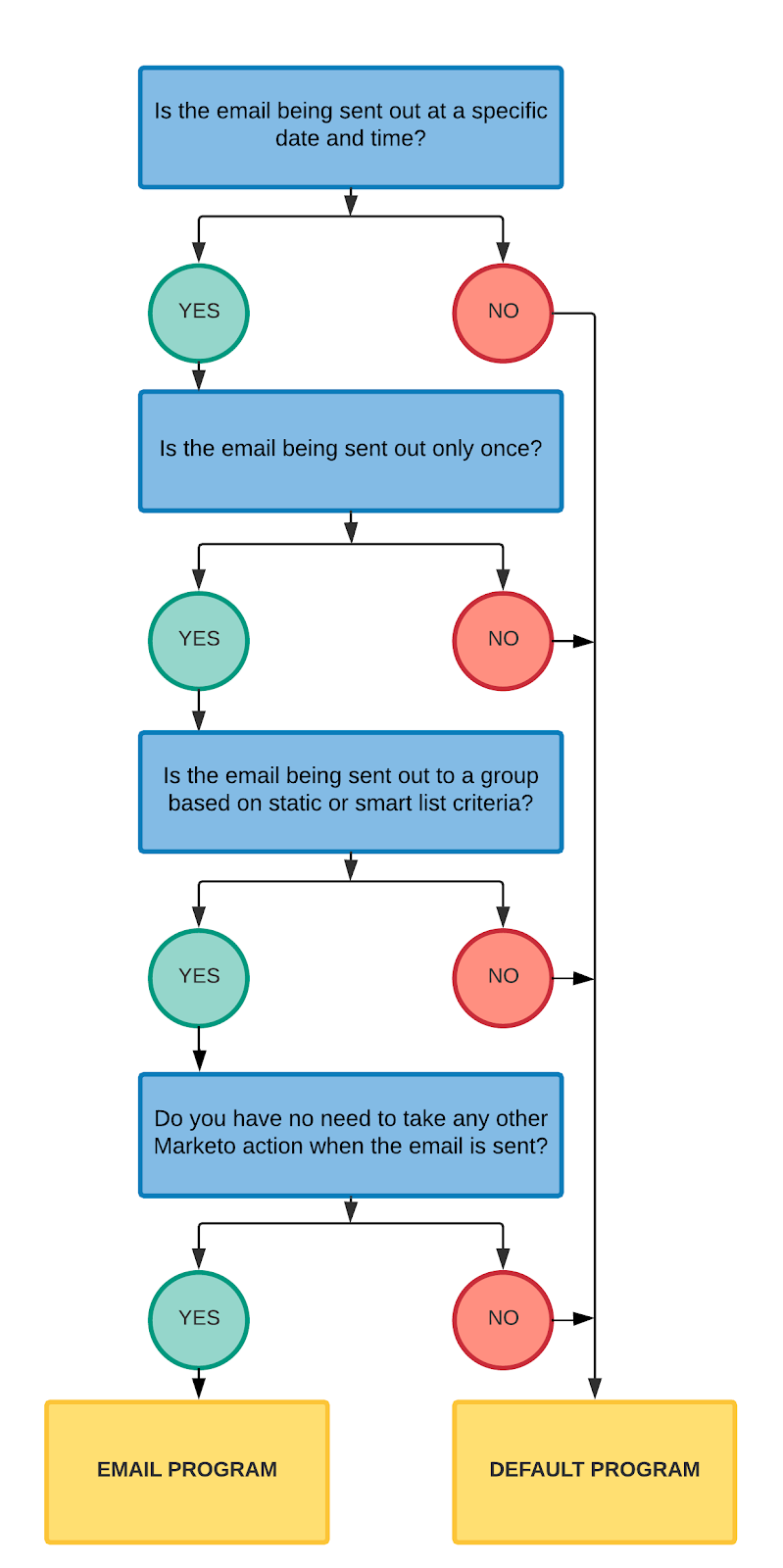Email is one of a marketer’s most powerful tools in creating and enhancing customer experience (CX). But sometimes—especially when you’re just starting out with Marketo—determining which type of email program makes the most sense for which type of campaign can be confusing. Your first instinct may be to simply use an email program to send a one-off email, but is that your smartest option? While it will certainly address your short-term need—getting an email out to your customers—it may not help you reach your longer-term objectives, nor may it be your best bet in terms of scalability, reporting or other important elements.
In this post, I’ll take a closer look at the two main types of customer emails, nurturing emails and emails with varying audiences or varying timing, and will explain how to know which type of Marketo email program type to use.
Nurturing Initiatives
If your email’s intent is to nurture, whether it’s leads or customers, there are two types of programs available to use:
- Engagement Program
- Default Program
To help determine which nurturing program you should use, simply answer a few questions.
Using Engagement Programs
Engagement programs offer marketers a lot of benefits—among them, the ability to add leads, add content and go. But it also has a few disadvantages you must be aware of before you choose it for all of your email marketing needs.
Pros:
- Ability to add, pause, and remove leads from the program.
- Simple dashboard that includes an Engagement Score for reporting email metrics.
- Engagement Stream Performance Report provides performance analytics of all of the email assets within your engagement program in one centralized place.
- Easily see how many members of your engagement stream have exhausted content.
Cons:
- Lack of control over message timing because you set a cadence for the stream.
- Once content is exhausted, the next email everyone will receive is the next one added to that stream. This means that exclusion statuses should be used from the beginning if you ever need to add new email templates with the same content.
Adding a Default Program to an Engagement Program Stream
If you want even more control and flexibility within your Engagement Program, you can nest a Default Program within it. Why would you want to do this from a customer experience perspective? Good question. By nesting a Default Program in an Engagement Program, you’re setting it up so that people have to meet additional criteria to receive the email–being a member of the Engagement Stream isn’t enough. So if you were promoting a piece of content across channels, you could still add this piece of content to your Engagement Program, but people who received the content in the past would be excluded by using an Exclusion Status.
For example: Imagine you’re promoting a case study that’s accessible on your website. By nesting a Default Program with an Exclusion status campaign for all who have downloaded it in the past to your Engagement Program Stream, you can send the email without the worry of sending the case study to people who’ve already seen it.
Default Program Statuses within an Engagement Program
The additional status campaigns within the Default Program provide additional insight about the email and are helpful not only for reporting but for understanding where the customer is in their experience. For example, Exclusion status ensures that people don’t receive the same message twice (as we just discussed above) or receive specific emails if they’ve reached certain lifecycle stages. Engagement status is equally enlightening, as it alerts us to the fact that our customers are paying close attention; now is likely the optimal time to tailor our messaging, creating messages specifically intended to help them move to the next step in the customer journey.
Status and What it Means
00. Status – Batch Populate Exclusion: Excludes people from receiving the email by updating their Program Status to Nurturing Email > Exclusion based on criteria.
01. Status – Exclusion: Triggered campaign looking for reasons that a person should be excluded from receiving an email. Updates Program Status to Nurturing Email > Exclusion.
02. Status – Sent: Changes Program Status to Nurturing Email > Sent based on email being delivered.
03. Status – Opened: Changes Program Status to Nurturing Email > Opened based on email being opened.
04. Status – Clicked: Changes Program Status to Nurturing Email > Clicked (Success) based on email being clicked.
05. Status – Engaged: Changes Program Status to Nurturing Email > Engaged (Success) based on an action that is deemed a success within that program such as filling out a form.
06. Status – Unsubscribed: Changes Program Status Nurturing Email > Unsubscribed based on person unsubscribing in an email.
Adding a Default Program with an A/B Test to an Engagement Program Stream
As we all know, A/B testing is a can’t-live-without tool in every marketer’s arsenal—after all, knowing what resonates better with your customer will ultimately help you provide them with a better overall experience. To A/B test an email within an Engagement Program, you can use Champion/Challenger functionality in a Default Program.
Schedule Engagement Programs with Recipient Time Zone
The old cliche “timing is everything” holds true especially in email marketing. Even the most relevant, beautifully designed email with a highly enticing offer will struggle to convert if it’s sent when the prospect is asleep or when their inbox is being bombarded with other messages. To improve the customer experience, take advantage of scheduling your Engagement Program with your Recipient’s Time Zone. Then you set your cadence settings and check the Recipient Time Zone box.
Do note that you MUST schedule the first cast at least 25 hours in the future (24 hours + some time to get the campaign started) because people may qualify for the cast in every time zone across the globe.
Varying Audiences or Varying Timing
If your individual email initiatives have audiences or timing that will vary, as in situations like creating an event invitation, advertising a new product launch or making an occasional company announcement, the two types of programs you’ll use are:
- Email Program
- Default Program
Choosing a Program Type for Email Initiatives
Ask yourself the following questions to help you to decide which program type to use for your email initiatives:
Using Email Programs
Similar to using Engagement Programs, using Email Programs comes with its own set of advantages and disadvantages.
Pros:
- Allows for A/B testing functionality including subject line, whole email, from address and date/time.
- Easy to read dashboard with metrics including Engagement Score, opens, clicks, click to open, unsubscribes.
- You can nest an email program within a default program or event program.
Cons:
- Unable to send in recipient time zone and A/B test at the same time.
- Email programs cannot be resent.
- Email programs can only run one test at a time.
Thoughtful Email Programs are a Win-Win
Emails that enhance your customers’ experience and help you achieve your long-term goals lead to a win-win situation. Putting some thought behind the type of email program you should use to send a specific type of email campaign will help ensure your success. By following the flowcharts outlined here, you’ll be able to quickly and easily determine the most appropriate program type for nurturing and other types of emails, and your customers will benefit from receiving emails that show that you value their preferences and needs.
Does your organization need help achieving ROI from Marketo? Learn how the Marketo experts at MERGE can help. Contact us today!




